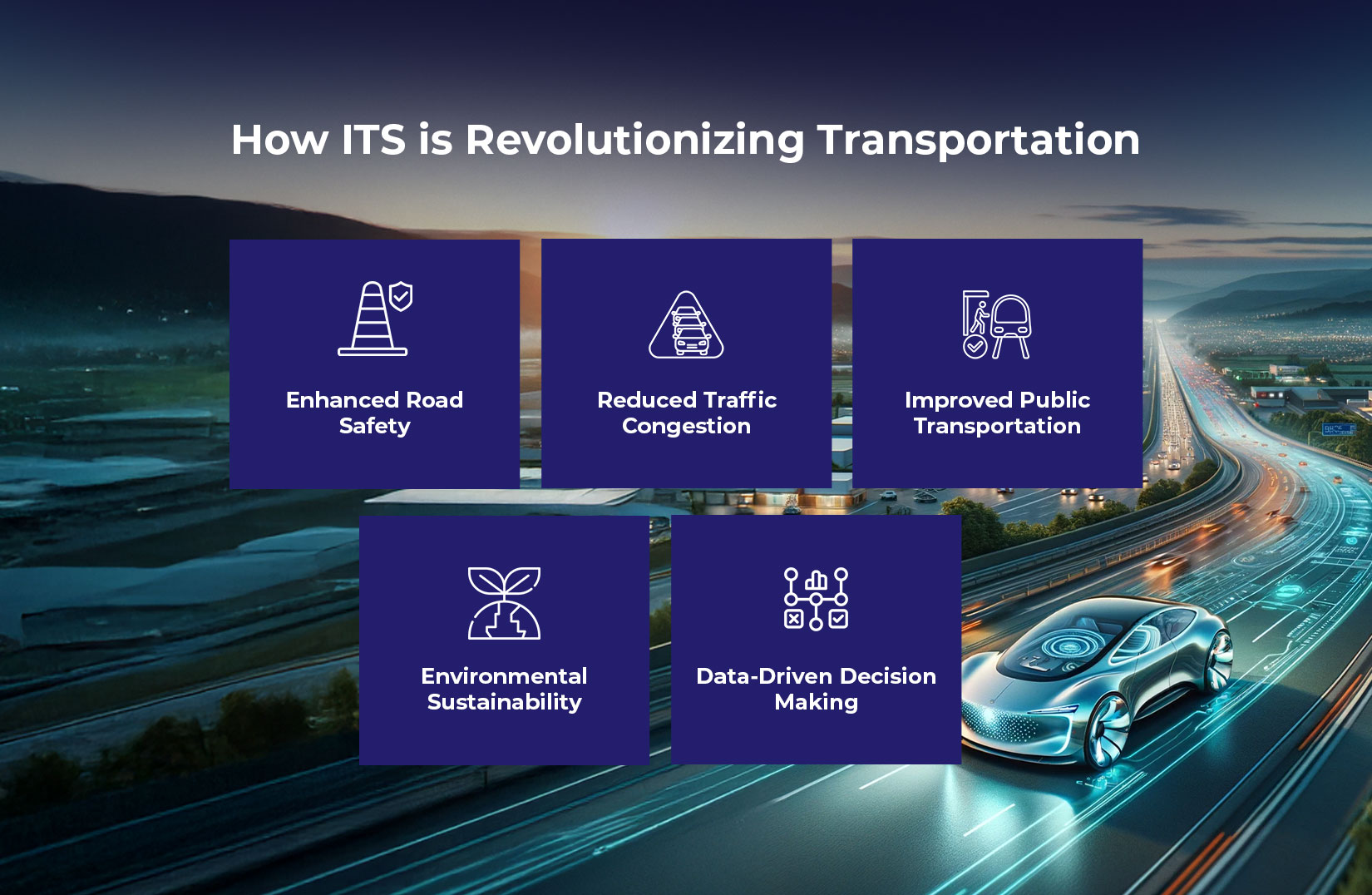
The Future of Mobility: How ITS is Revolutionizing Transportation
Transportation is evolving faster than ever. Cities are growing, traffic congestion is worsening, and the demand for safe, efficient, and sustainable mobility solutions is rising. At the heart of this transformation is the Intelligent Transportation System (ITS). ITS is not just a buzzword; it’s the backbone of modern mobility.
What is an Intelligent Transportation System?
An Intelligent Transportation System integrates advanced technologies – such as sensors, artificial intelligence, GPS, and communication networks into transportation infrastructure and vehicles. The goal is to enhance traffic management, improve road safety, reduce environmental impact, and deliver a seamless commuting experience.
Governments and private organizations worldwide are investing in ITS to address the growing challenges of urban mobility. In fact, the global ITS market is projected to reach $68 billion by 2030, growing at a CAGR of 10.5% (Source: MarketsandMarkets).
How ITS is Revolutionizing Transportation

1. Enhanced Road Safety:
Road accidents claim over 1.3 million lives globally every year (WHO). ITS can significantly reduce these numbers by providing real-time hazard warnings, automated braking, lane assistance, and predictive analytics. With intelligent transportation software in place, authorities can detect risky driver behaviors and respond faster to emergencies.
2. Reduced Traffic Congestion:
Congestion leads to lost productivity and increased pollution. According to the INRIX Global Traffic Scorecard, U.S. drivers lost an average of 51 hours in traffic in 2022. ITS tackles this by using dynamic traffic signal control, adaptive routing, and congestion pricing to optimize traffic flow.
3. Improved Public Transportation:
ITS enables real-time tracking, predictive arrival times, and digital ticketing for buses and trains. These features not only improve service reliability but also encourage more people to switch from private to public transport.
An intelligent transportation solution can also help manage multi-modal networks, integrating buses, trains, ride-shares, and even micro mobility options like e-scooters and bikes.
4. Environmental Sustainability:
By optimizing traffic flow and reducing idle times, ITS helps lower greenhouse gas emissions. Eco-driving systems provide real-time feedback to drivers for more fuel-efficient behavior. Intelligent transportation software can also support electric vehicle (EV) integration by managing charging station availability and routing.
5. Data Driven Decision Making:
ITS collects massive amounts of data from cameras, sensors, and GPS devices. This data helps city planners and transportation departments make informed decisions, from infrastructure investments to traffic law enforcement.
With the help of intelligent transportation solutions, predictive analytics can identify traffic patterns, forecast demand, and even simulate the impact of new policies before implementation.
Real-World Examples of ITS in Action
Across the globe, Intelligent Transportation Systems are being deployed with great success.
1. Singapore:
Implemented a robust ITS framework that includes electronic road pricing, smart traffic signals, and designated test zones for autonomous vehicles.
2. Amsterdam:
Uses ITS to integrate its extensive cycling network with real-time traffic data, ensuring safe and efficient routes for both cyclists and drivers.
3. Los Angeles:
Has adopted an Adaptive Traffic Control System (ATCS) that dynamically adjusts signal timings based on real-time traffic conditions. This results in a 12% reduction in travel time and a 16% improvement in vehicle speed.
These examples highlight the transformative impact of ITS in various urban contexts.
The Role of Artificial Intelligence and IoT
Artificial Intelligence (AI) and the Internet of Things (IoT) are driving forces behind the effectiveness of Intelligent Transportation Systems. AI enables real-time analysis of traffic data, allowing for smarter signal timing, congestion prediction, and accident detection. At the same time, IoT devices such as connected traffic signals, cameras, and road sensors continuously collect and transmit data to central systems.
This integration allows intelligent transportation software to become highly adaptive, learning from patterns and historical data to optimize transportation networks proactively. As AI and IoT technologies continue to evolve, they will unlock even greater potential in intelligent transportation solutions. Thereby, creating safer, more efficient, and more resilient urban mobility ecosystems.
Challenges Ahead
Despite its benefits, implementing an Intelligent Transportation System comes with challenges:
– High Initial Costs: Infrastructure upgrades and system integration require significant investment.
– Data Privacy: Collecting data raises concerns about surveillance and personal privacy.
– Interoperability: Multiple vendors and legacy systems make seamless integration difficult.
– Cybersecurity: As transportation becomes more connected, it also becomes more vulnerable to cyberattacks.
The Road Ahead
The future of mobility is connected, autonomous, shared, and electric (CASE). ITS is at the core of this evolution. As cities aim for smarter and more sustainable transportation ecosystems, intelligent transportation solutions will become indispensable.
Policy support, cross-sector collaboration, and continued technological innovation are crucial for ITS adoption. Governments should prioritize funding, establish data standards, and incentivize innovation in intelligent transportation software.
Conclusion
From easing congestion and improving safety to enabling sustainable travel, Intelligent Transportation Systems are shaping the future of how we move. With ITS gaining traction globally, we are entering an era of smarter, safer, and more efficient mobility.
Investing in ITS today means creating more livable cities tomorrow. The revolution is already underway and the road ahead is intelligent. So, click on the red button below and book a demo with LogiNext Solutions today!
48







@LogiNext